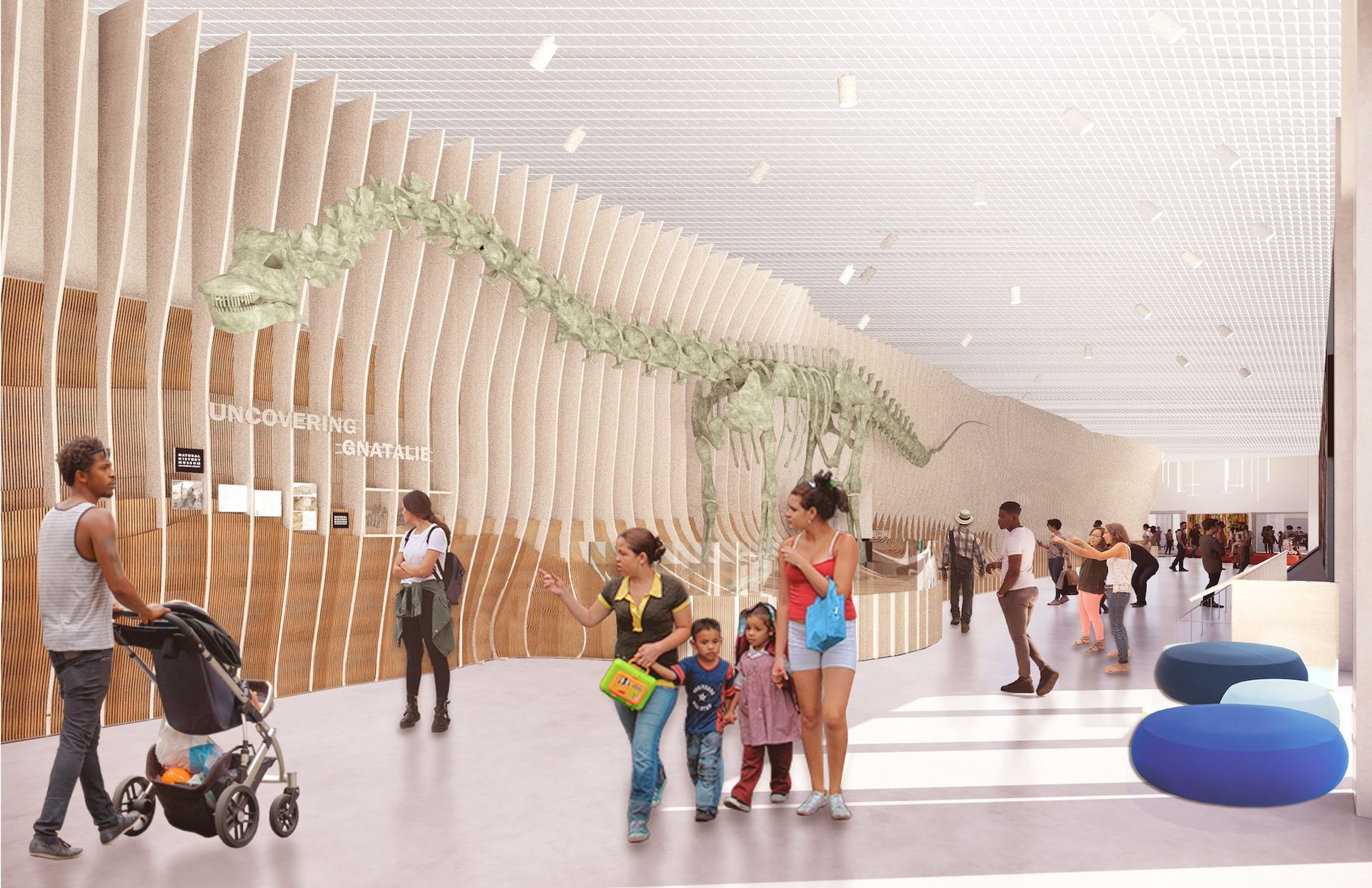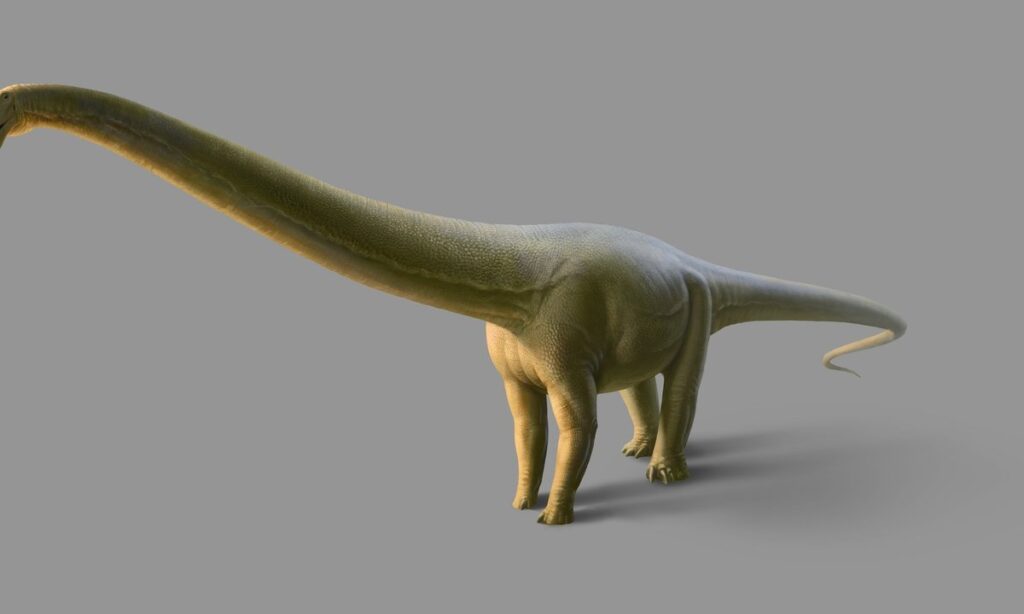Not only is this a crucial election year for billions of voters in India, Mexico, the European Union, the United Kingdom, the United States, and countless other countries, but polls recently closed to choose a name for the Natural History Museum of Los Angeles County’s (NHM) featured dinosaur fossil, a 75-foot-long sauropod skeleton known for the distinctive green color of its bones.
The museum is putting the finishing touches on a $75 million renovation and expansion called NHM Commons, with a new welcome pavilion (where fossils will be prominently and permanently displayed) opening this fall. The museum asked the public to choose from five possible dinosaur names. More than 8,100 votes were tallied, and Natalie won with more than 33% of the vote, beating out Olive, Sage, Esme and Verdi.

The Natural History Museum of Los Angeles will exhibit Gnatalie in the NHM Commons Judith Pearlstein Welcome Center. Rendering by Frederick Fisher & Partners, Studio MLA, and Studio Joseph
The spelling of Gnatalie (pronounced like “na-talie”) reflects the hard work of the paleontologists who excavated this fossil, the most complete sauropod skeleton on the US West Coast, in a riverbed in the Utah Badlands, enduring a relentless onslaught of gnats. All other possible names allude to the fossil’s color, which is due to deposits of the green mineral celadonite that filled the bone during fossilization. Gnatalie is made up of bones from multiple specimens of the same Diplodocus-like dinosaur, dating to the Late Jurassic Period, about 150 million years ago.
“Dinosaurs are the perfect vehicle for educating visitors about the essentials of science,” said Louis M. Chiappe, NHM’s senior vice president for research and collections and director of the museum’s Dinosaur Institute, in a statement. “What better way to engage visitors in the process of scientific discovery and get them thinking about the wonders of the world we live in than with a green, 80-foot-long dinosaur!”
Natalie joins other named dinosaur fossils such as Sue the Tyrannosaurus rex at Chicago’s Field Museum, the Triceratops horridus at the Melbourne Museum, and Sophie the stegosaurus at London’s Natural History Museum. (As natural history museums increasingly place emphasis on dinosaur fossils as their centerpieces, collectors have taken notice, and the market for such specimens is booming.)
Gnatalie won the public vote handily, and may have had a slight advantage because NHM staff have internally referred to the fossil by that name for several years. But this fall marks the fossil’s first public appearance, so it’s unlikely that the internal nickname influenced the outcome much, although that would be hard to explain to Verdi voters who are probably grieving and turning green with jealousy by now.


